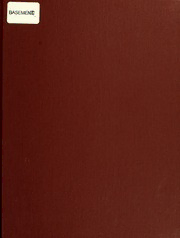
Systemic creation of organizational anxiety : an empirical study PDF
Preview Systemic creation of organizational anxiety : an empirical study
DEWEY HD28 .M414 ^6. Systemic Creation of Organizational Anxiety: An Empirical Study John J. Voyer, Janet M. Gould, and David N. Ford Sloan Working Paper #3916 August 1996 © 1996 Voyer, Gould, Ford John Voyer, School of Business, University of Sourthern Maine Janet Gould, Center for Organizational Learning, Massachusetts Institute of Technology David Ford, Institutt for Informasjonsvitenskap, Universitetet I Bergen, Norway The autors gratefully acknowledge comments and suggestions made by Peter Senge, Daniel Kim, John Carroll, and Rogelio Oliva, all of the Sloan School of Management at MIT. The authors would also like to acknowledge the help received from many staff members at the field site where this research took place. Concerns for confidentiality preclude our mentioning their names, but their contributions were critical to the success of the research. The same concerns prevent us from acknowledging the support received from the corporation where the research took place, but we are nevertheless very grateful for it. MASSACHUSETTS INSTITUTE SEP 16 1996 CioriMrtitb Systemic Creation ofOrganizational Anxiety: An Empirical Study Abstract Inquiry into a product development organization in the semiconductor industry revealed a high level oforganizational anxiety. Using causal loop diagramming in conjunction with qualitative data analysis, inside members ofa research team created a map ofthe organization's cognitive schema (or collective mental model) from data obtained from informants in the organization. The map showed how the organization's use ofclassic defense mechanisms to control organizational anxiety instead created feedback loops that amplified it. Suggestions for controlling anxiety systemically are offered. Systemic creation 3 Many people experience anxiety, an intense feeling ofapprehension and fear, in circumstances where these emotions are warranted, such as acute physical danger. But since the dawn ofpsychology and psychotherapy, psychoanalytic scholars have suggested that anxiety, at an unconscious level, is virtually endemic to the human condition. For example, late in his career Freud (1920) focused on the notion that people engage in an elemental internal struggle between instincts oflife and death. Using this idea as a springboard, Klein (1948) suggested that the young child's struggle between life and the unease associated with death leads to something she called "persecutory anxiety." More recently, psychoanalytically-oriented organizational researchers have proposed that individual anxiety has an organizational analogue, and have suggested some reasons & for its existence (Diamond, 1991; Hirschhom, 1988; Hirschhom Young, 1991; Kets de & & Vries Associates, 1991; Kets de Vries Miller, 1984). Hirschhom and Young (1991) and Diamond (1991) suggest that a struggle, very similar to the one in individuals, takes place in work groups and organizations. Although organizations do not suffer death in the same way that individuals do, they do face the possibility that their financial or operational viability (the analogue to being alive) will end. Organizations face the possibility ofceasing to exist (the analogue to death) through bankruptcy, takeover, mergers, and so on. Scholars propose that organizations engage in struggles between continued existence and demise, in a process similar to the one described above for Systemic creation 4 individuals. The result is organizational persecutoiy anxiety (Jaques, 1955) or "annihila- & tion anxiety" (Hirschhom Young, 1991). There is extensive literature about how work groups and organizations attempt to cope with their anxiety. Some ofthis is based on the work ofKlein (1946), who showed how individuals cope with anxiety by using the "manic defense." The manic defense com- bines the psychodynamic processes ofsplitting, introjection and projection (see Morgan, 1986, for a comprehensive listing ofpsychodynamic concepts). Splitting is the result of the elemental struggle between life and death mentioned above—people separate (split) the "good" aspects oftheir existence from the "bad." They project bad onto others and introject good into themselves. Hirschhom (1988) showed how the manic defense can be used by work groups and organizations. An anxious manager may split good and bad by considering himselfomnipotent (introjecting good) at the same time that he views lower- level participants as unworthy (bad). The manager may almost literally project these feelings onto workers by punishing them—with extra work, unreasonable schedules, unachievable goals, and so forth. Inspired by Klein, Bion (1959) did extensive work with groups in leaderless, and therefore anxiety-provoking, situations. Out ofthis work he identified three "basic assumption" defenses against group anxiety. These defenses are designed to help the organization and its members cope with their anxiety. The first is dependency, where a group ceases trying to solve its problems in a healthy way while it waits for a "messiah" to save it. The second is pairing, where two ostensibly "good"
